On the sign:
סמל המועצה לשימור אתרי מורשת בישראל
סמל מעגל תנועות הנוער הציוניות-חלוציות-מגשימות
סמל משרד הראש הממשלה - המועצה הציבורית להנצחת זכרו של בנימין זאב הרצל
סמל העיר ירושלים
בדרכו של הרצל
באוקטובר 1898 הגיעה לחופי ארץ ישראל משלחת ציונית ובראשה בנימין זאב הרצל, מייסדה של התנועה הציונית. המשלחת הוזמנה לירושלים על-ידי הקיסר הגרמני וילהלם השני. מפגש זה נחשב בעיני הרצל כצעד חשוב בדרך להשגת היתר התיישבות (צ’ארטר) מידי הסולטן העות’מאני, עבדול חמיד השני, ששלט באותם ימים על כל שטחי הארץ. בביקורם בארץ עברו הרצל וחברי המשלחת בשבעה מקומות יישוב שהשאירו בהם רושם רב.
תחנה שביעית - ירושלים
"את העיר העתיקה עם קדשיה הייתי סוגר כקופסא, כל מלאכה ומשא-ומתן הייתי מוציא מתוכה, רק בתי-יראה ומוסדות-חסד ישמרו מבית לחומה העתיקה, ועל צלעות הגבעות בחוג רחב מסביב, אשר יוריקו בעבודתנו, תשכון לה ירושלים חדשה כלילת תפארת...
(מתוך יומנו של בנימין זאב הרצל, 2 בנובמבר 1898)
[תמונה של הרצל בירושלים]
"יש לחשוש שהדור הבא לא ידע את הרצל בלתי אם כשם, כסיסמא, כדגל, לכל היותר כאגדה נאה".
(ברל כצנלסון בתוך: "הרצל הדור")
"בקונגרס באזל נוסחה התוכנית של תנועתנו בפני עם ועולם. נאמר שם: יצירת בית המעוגן במשפט העמים בשביל העם היהודי. ארץ אבותינו היא, המתאימה להתיישבות ולהפרחה. הוד מלכותו ראה את הארץ. היא זועקת לבני-אדם, שיבואו לעבד אותה, והרי יש לנו בקרב אחינו פרולטריון שמצבו נורא. האנשים הללו זועקים לארץ שאותה הם רוצים לעבד. והנה רצוננו הוא להפוך את המצוקות הללו - מצוקת הארץ ומצוקת העם, בחברנו אותן יחד על יסוד של תכנון, למעשה חדש של רווחה... ואולם לא היינו מעזים לעשות זאת, אם מחשבתנו לא היתה נקייה מחשש כלשהו שבמעשנו זה עלול חלילה להיות פגם או פגיעה בשליטה של הארץ הזאת... הרעיון שנושב ממנו רצון רב-שנים לפיוס, אינו בא לסכן חלילה את רגשות האדיקות או את הזכויות של אף איש. אנו מבינים ומכבדים את יראתן של כל הדתות כלפי הארץ שעליה צמחה גם אמונתם של אבותינו. זו מולדת הרעיונות שאינם נחלתו הבלעדית של עם אחד או של דת אחת. ככל שבני האדם עולים ברמתם המוסרית כך הם מיטיבים להכיר במה שמשותף ברעיונות אלה, וכך היתה, זה מזמן, העיר הגשמית ירושלים על חומותיה ספוגות הגורלות, לעיר סמלית, קדושה לאנשי התרבות."
(בנימין זאב הרצל, בתוך: "דבר אל הקיסר הגרמני בירושלים")
[צידו השני של השלט כולל טקסט באנגלית]
[The other side of the sign includes text in English]
The emblem of the city of Jerusalem
Symbol of the Prime Minister’s Office - the Public Council for the Commemoration of Benjamin Zeev Herzl
Symbol of the circle of Zionist-pioneering-youthful youth movements
Symbol of the Council for the Preservation of Israeli Heritage Sites
In the Footsteps of Herzl
A Zionist delegation arrived at the shores of Eretz Israel in October 1898, headed by Benjamin Ze’ev Herzl, the founder of the Zionist movement, invited to Jerusalem by the German Kaiser. Wilhelm II. This meeting was considered by Herzl to be an important step on the path to attaining a settlement charter from the Ottoman Sultan, Abdul Hamid II, who ruled over all of
The Seventh Stop: Jerusalem
"I would seal the Old City, in all its sanctity, in a box. I would remove all work and commerce, leaving only houses of worship and charitable institutions to be preserved within the walls of the Old City. And on the encircling hills, made green by our colonists, the new Jerusalem would reside, the perfection of splendor..."
(From Herzl’s journal, November 2nd, 1898)
[Picture of Herzl in Jerusalem]
"One should fear that the next generation will not know Herzl other than as a name, a slogan, a flag, or at most, as a nice legend.."
("Beri Katzenelson, in "Herzl, the Generation")
"Our movement’s program was formulated at the Basel Congress before the nation and the world. It was said there: "The aim of Zionism is to create a home for the Jewish people in Eretz Israel, secured by the law." The land of our forefathers is suitable for us to settle and make bloom. His Highness saw the country. It cries out for people to come and work it, while amongst our brothers we have a proletariat whose situation is terrible. Those people cry out for the land they wish to work. And our desire is to turn this misery - the misery of the land and the misery of the people - to connect them through a foundation of planning to a new act but we wouid not dare to do so if our thoughts were not free of any fear that...of welfare in our deeds we might, Heaven forbid, detract or harm the ability to rule this land. The idea is to draw from it an enduring desire for reconciliation, not to endanger, Heaven forbid, the piety or rights of any person. We understand and respect the reverence of all religions towards the country on which the belief of our forefathers sprang. This is the birthplace of the principles that are not the unique heritage of one single nation or religion. The higher the morals of people, the more they recognize the commonality in these principles. And thus for a long time the earthly city of Jerusalem, whose walls are soaked in destiny, has been a symbolic city, sacred to all people of culture."
("Benjamin Ze’ev Herzl, from "Address to the German Kaiser in Jerusalem")
Comments:
The sign shape is rectangle but its head is designed according to the silhouette of the old building of the Gymnasia Herzliya, which serves as a logo of the Council for the Preservation of Heritage Sites in Israel
This sign differs from the other "blue" heritage signs in that it is placed inside a glass / plastic panel, which allows for a double-sided sign, one side in Hebrew, and the other side in English.
The other side of the sign
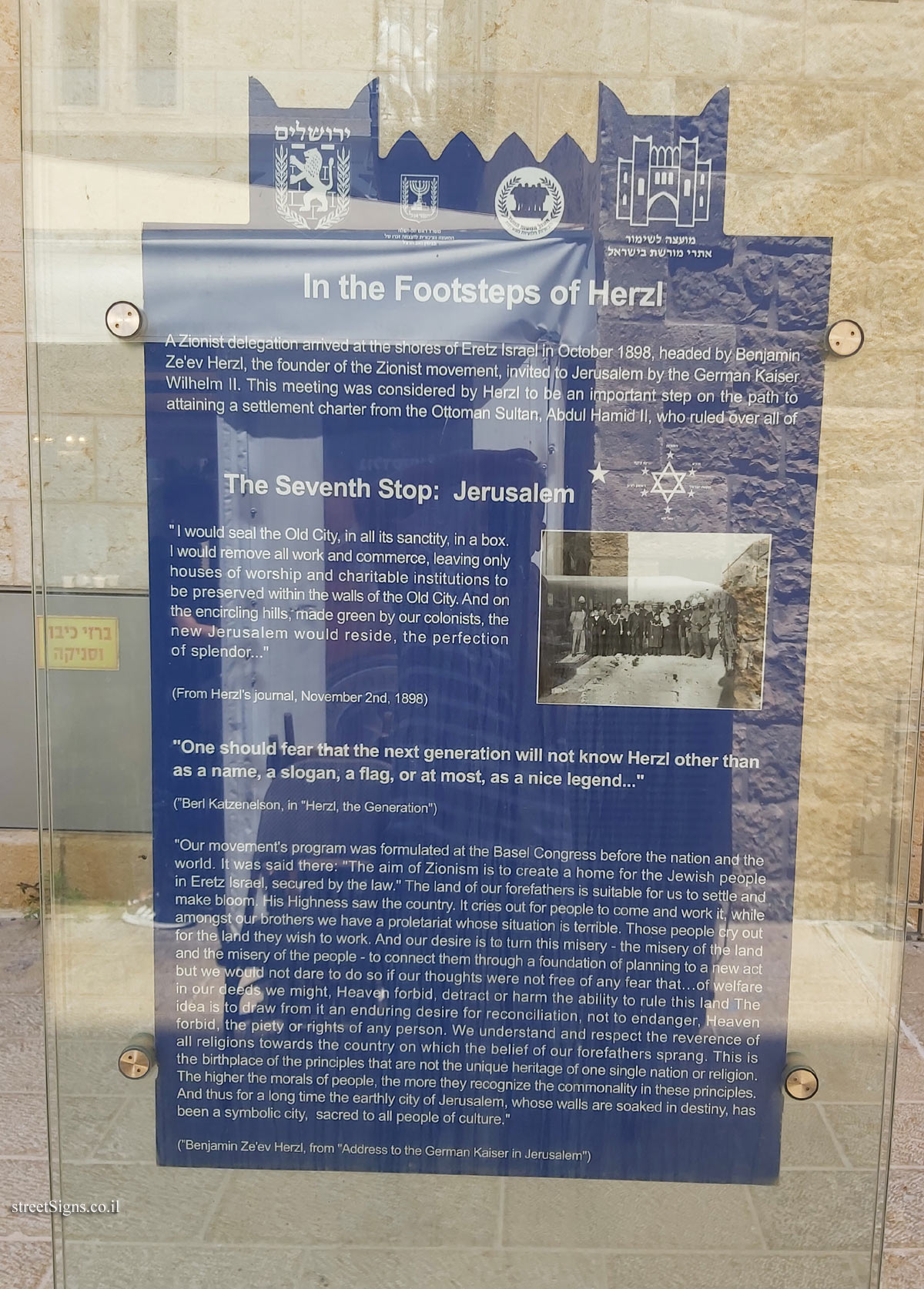 Click for a larger image
Click for a larger image The sign is located near Beit Stern, a restored house in the Mamilla compound in Jerusalem, in which Herzl was a guest during his visit to Jerusalem prior to his meeting with German Emperor Wilhelm II.
In the next photo taken that day you can see the sign placed in the aisle located after the house
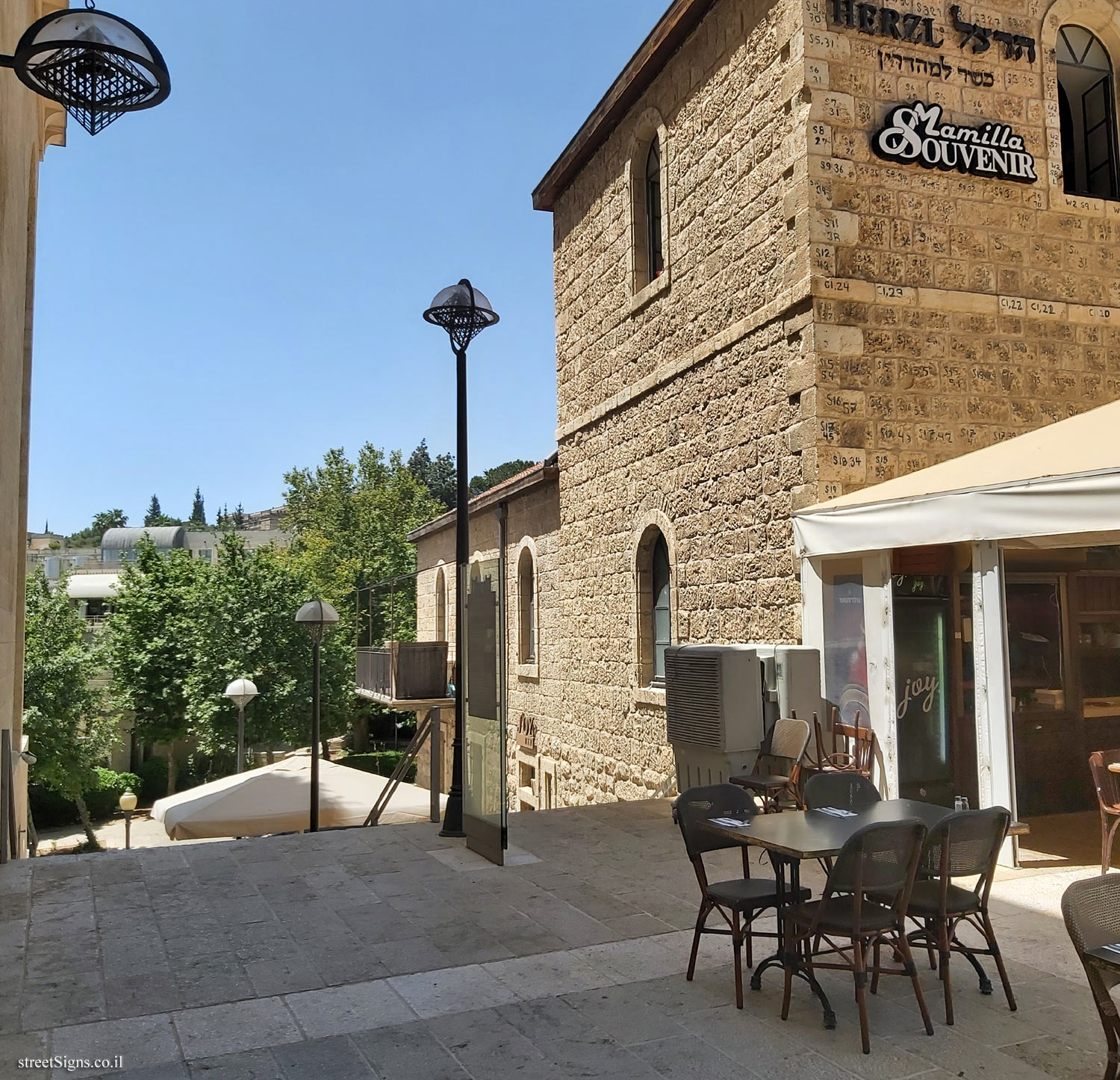 Click for a larger image
Click for a larger image The Stern House was photographed that day
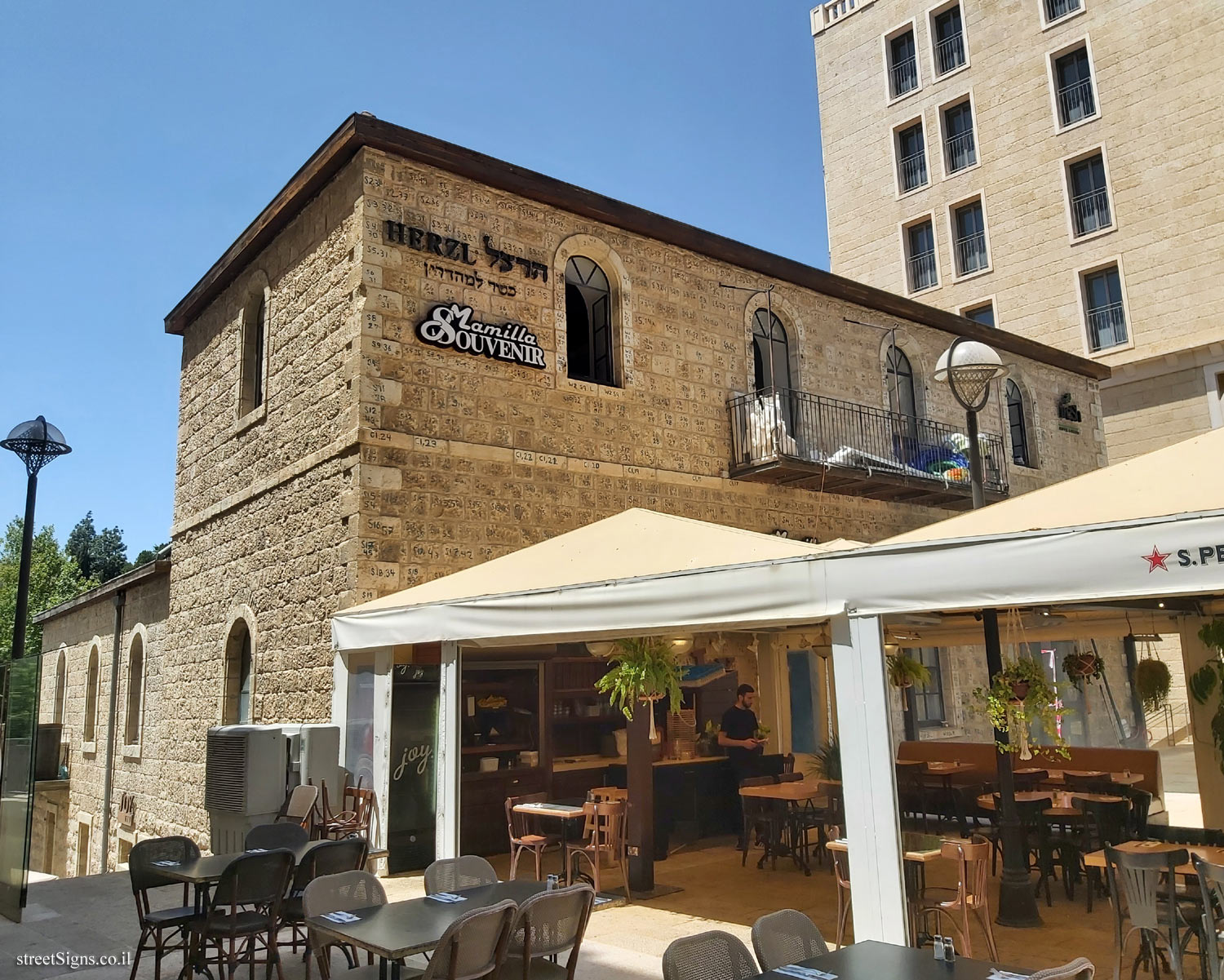 Click for a larger image
Click for a larger image In enlarging the image, you can see the numbering on the stones, which were recorded during the dismantling of the building, and were used for its restoration.
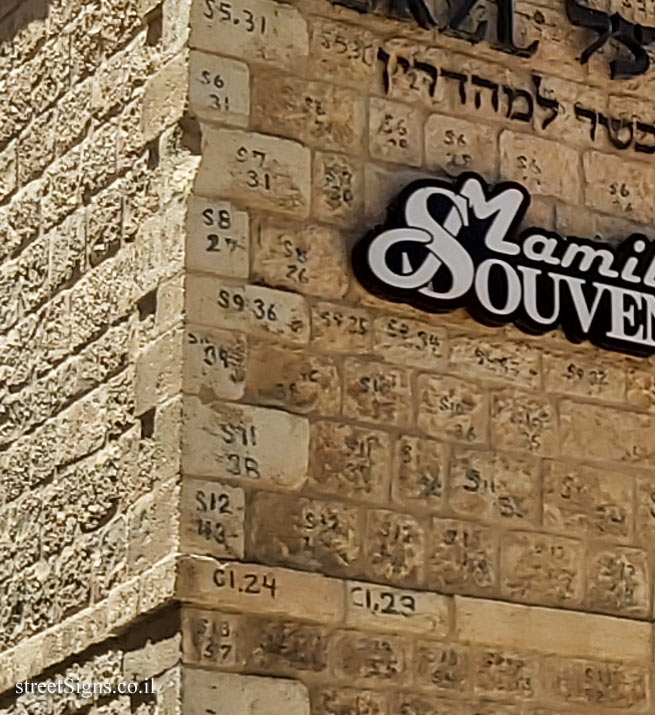 Click for a larger image
Click for a larger image More stations in Herzl’s journey
First station: Jaffa Port
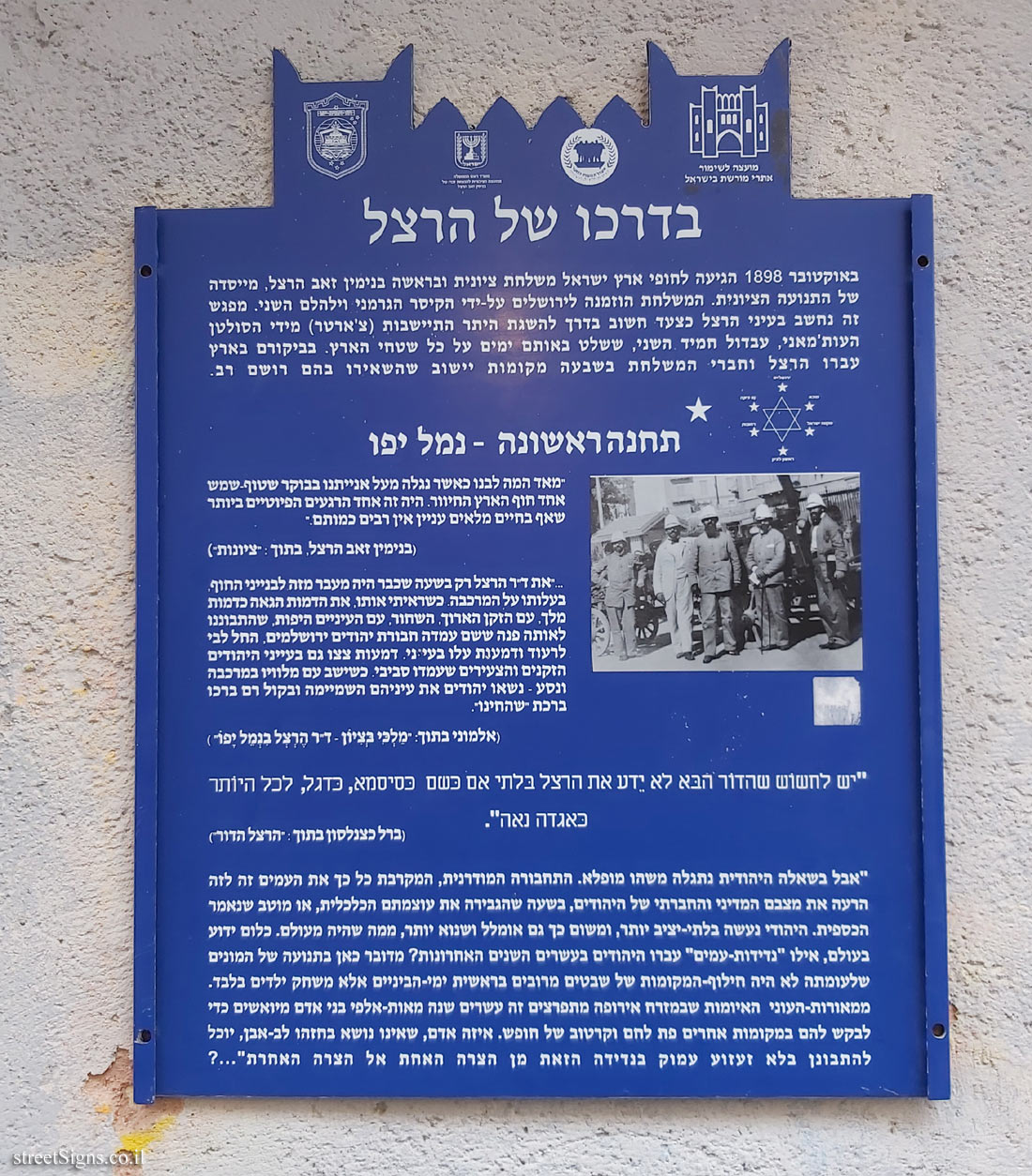 Click for sign's details
Click for sign's details Second station: Mikveh Israel
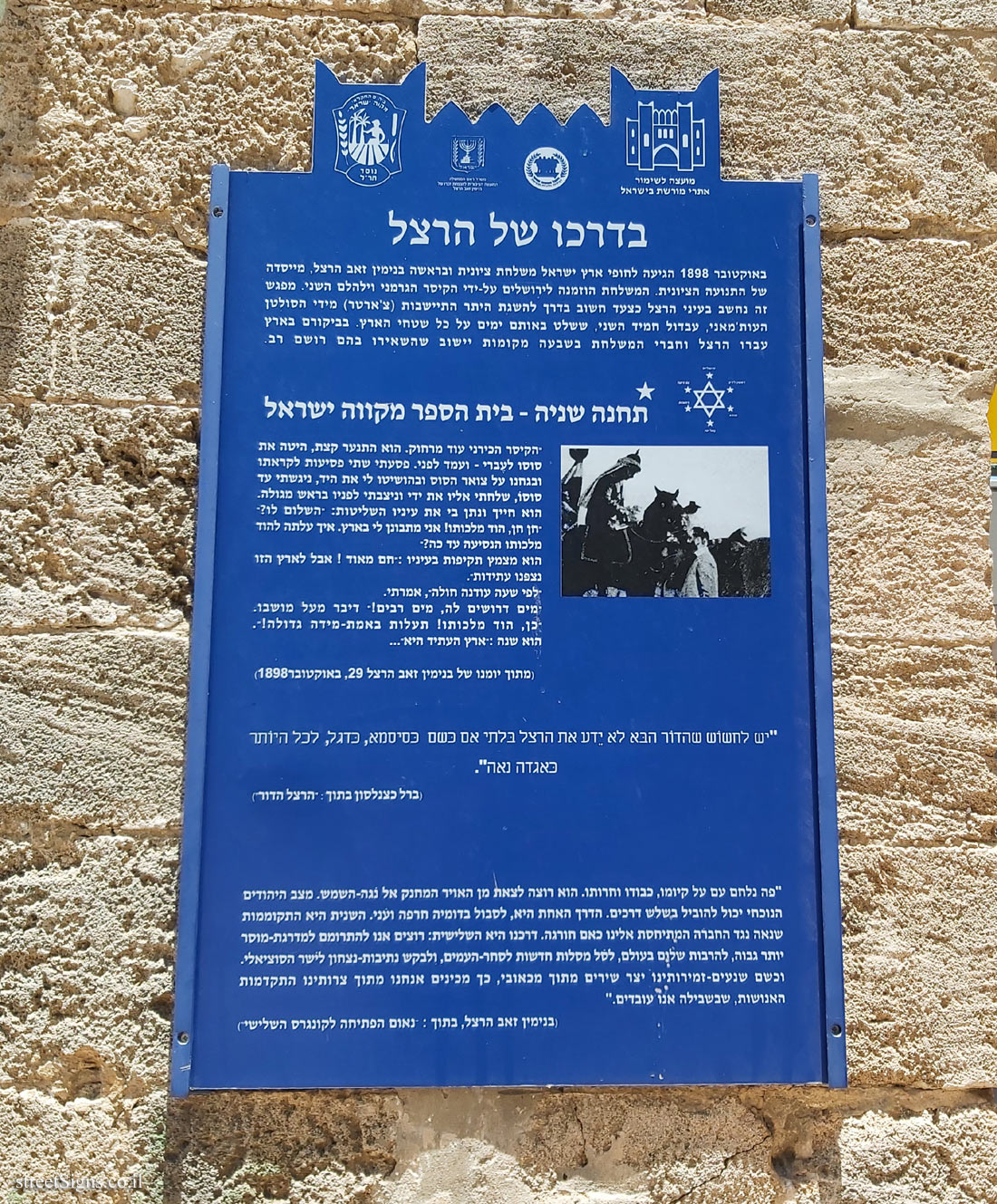 Click for sign's details
Click for sign's details Third station: Rishon LeZion
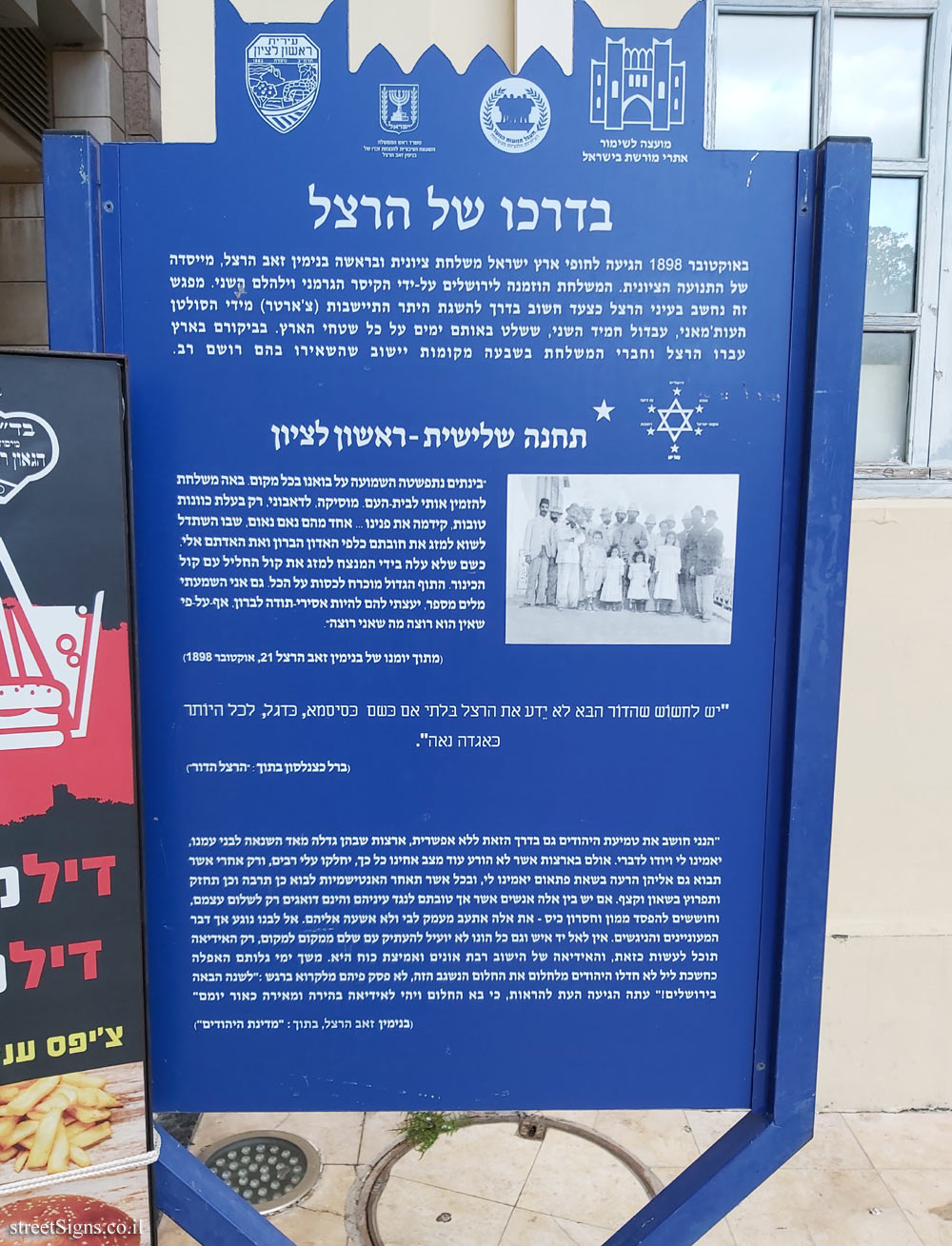 Click for sign's details
Click for sign's details Fourth station: Ness Ziona
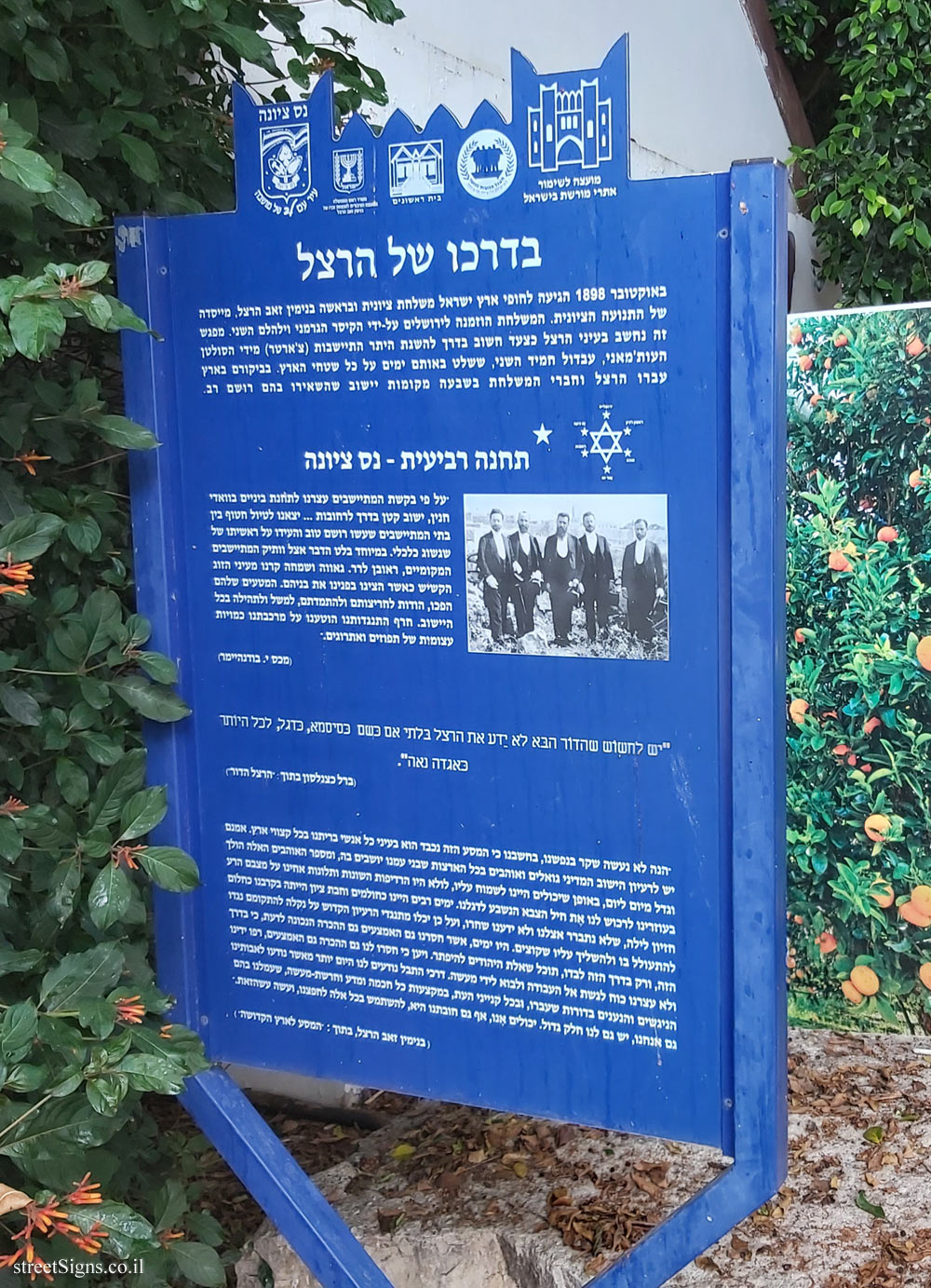 Click for sign's details
Click for sign's details Fifth station: Rehovot
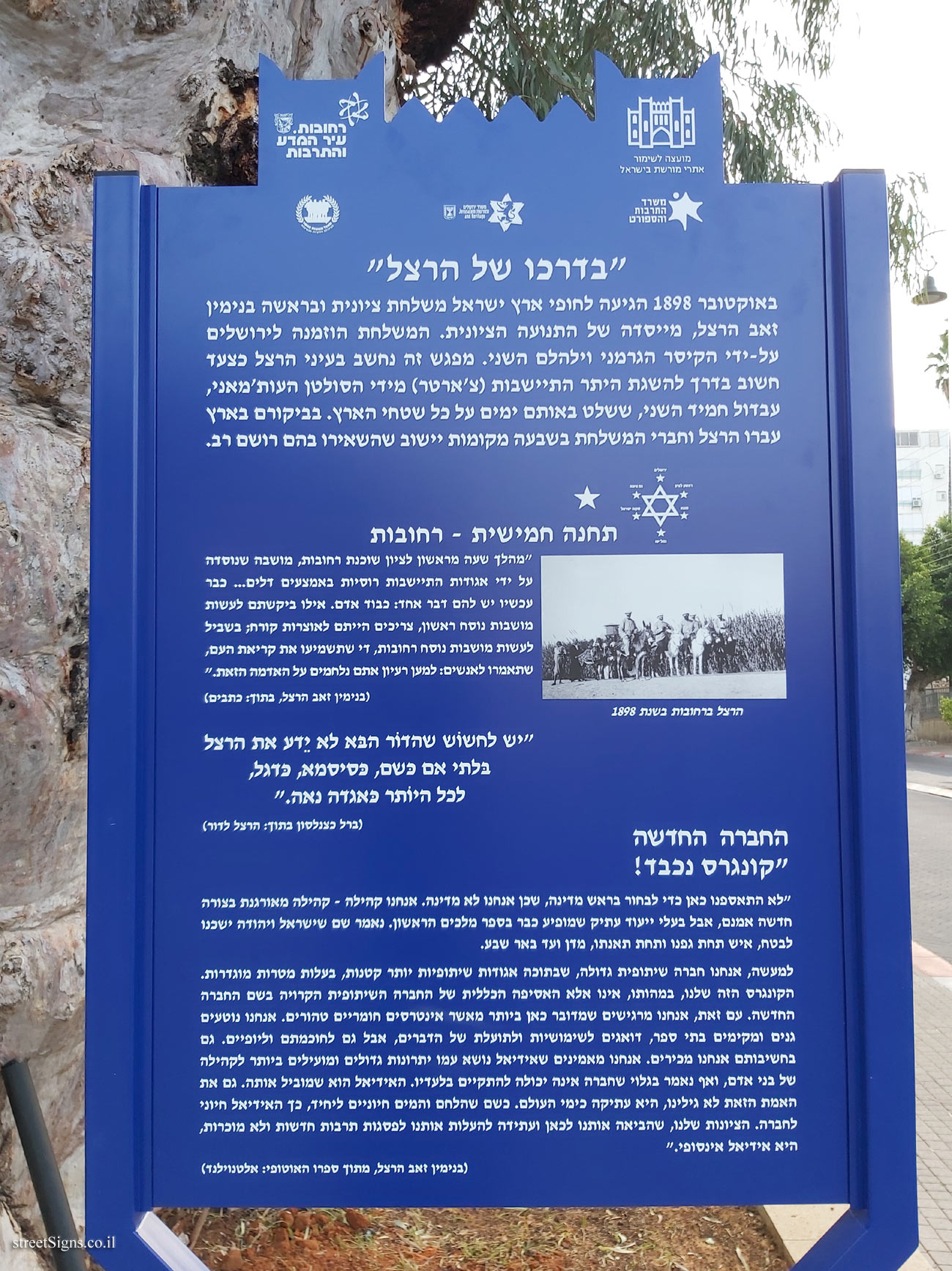 Click for sign's details
Click for sign's details

 Click for a larger image
Click for a larger image  Click for a larger image
Click for a larger image  Click for a larger image
Click for a larger image  Click for a larger image
Click for a larger image  Click for sign's details
Click for sign's details  Click for sign's details
Click for sign's details  Click for sign's details
Click for sign's details  Click for sign's details
Click for sign's details  Click for sign's details
Click for sign's details